Best e-MTB motors – our expert pick of the top electric bike motors
We breakdown the best full power and lightweight e-MTB motors we've tested to date
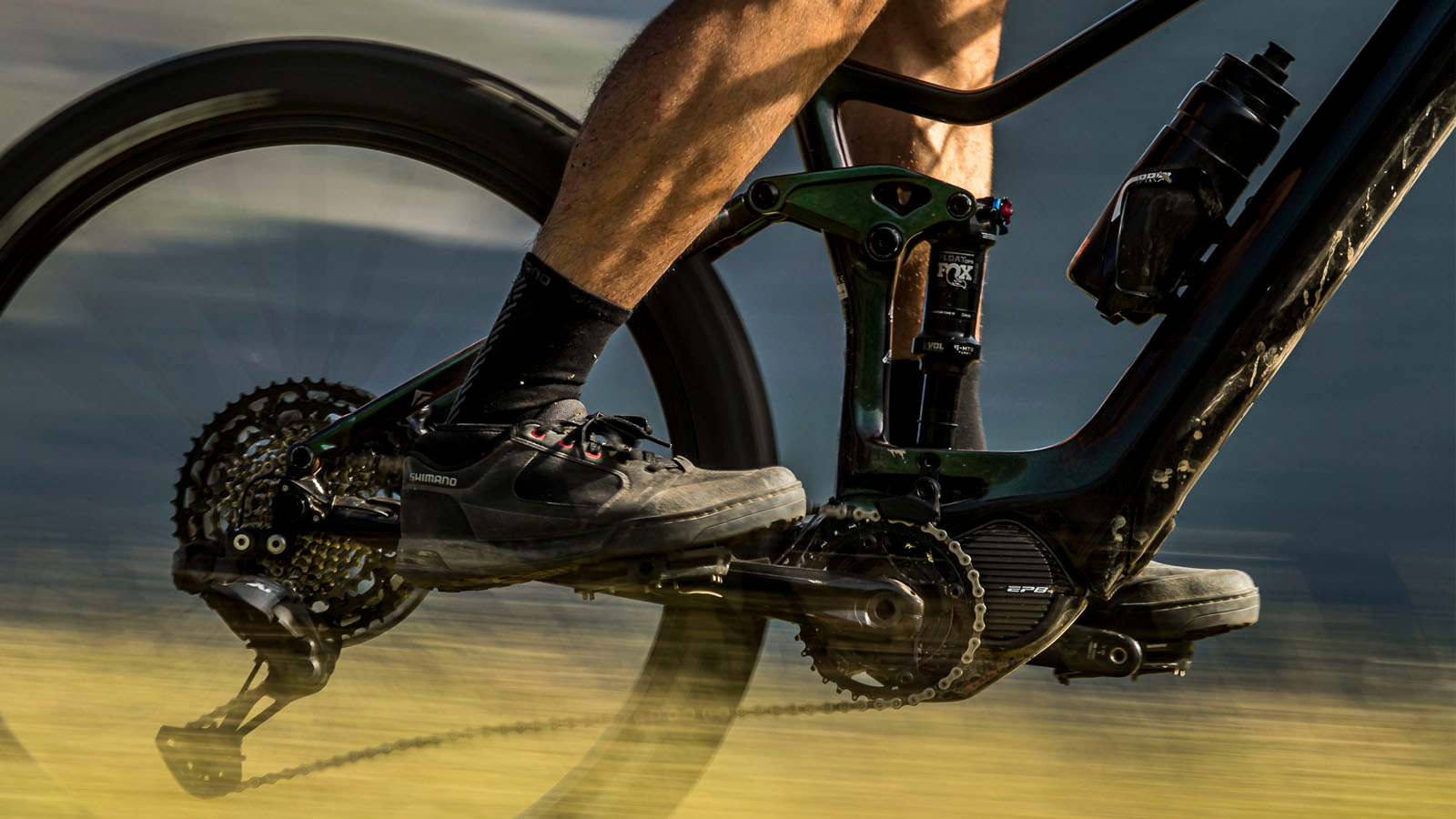
There are lots of the best e-MTB motor options now, so how do you choose the best one when buying an e-bike? Our experts have been powering round the trails on all the latest options to tell you everything you need to know from batteries to whether the manufacturers will have your back when things go wrong.
While the headline numbers are often similar, the performance and price of the best electric mountain bike motors can differ dramatically. There’s a lot more to making a good motor than going for maximum wattage, torque (Nm) and efficiency. Motor noise, how the drive is delivered, what modes you have to play with are all important to consider, there's also the array of different data display, controller and tuning options that can all be a make or break factors too. Reliability, customer service support and battery / booster options are all super important to how much you love or hate life with your e-MTB.
Never forget that the electric aspects aren’t the only important bit of choosing an e-MTB. You might only be able to afford a budget e-MTB which can limit motor options. Handling, suspension and components – like e-MTB tires – suitable for hardcore use with a heavier weight are all very important to the overall character and which bikes will suit you best. That’s particularly important when considering motors too, as while some designs are used across lots of bike brands, there are some that are unique to one design. You can also find the same motors being used with different battery capacities or even different power tunes by different brands.
That sounds like a lot to think about, but we have done the essential testing and comparisons for you, so check out our individual motor guides below to get your perfect e-MTB powertrain. And you want a deeper dive into comparisons between the two most widely used e-bike motors, check out our Bosch Performance Line CX vs Shimano EP801 article.
The best e-MTB motors
Why trust BikePerfect
The best full power e-MTB motors
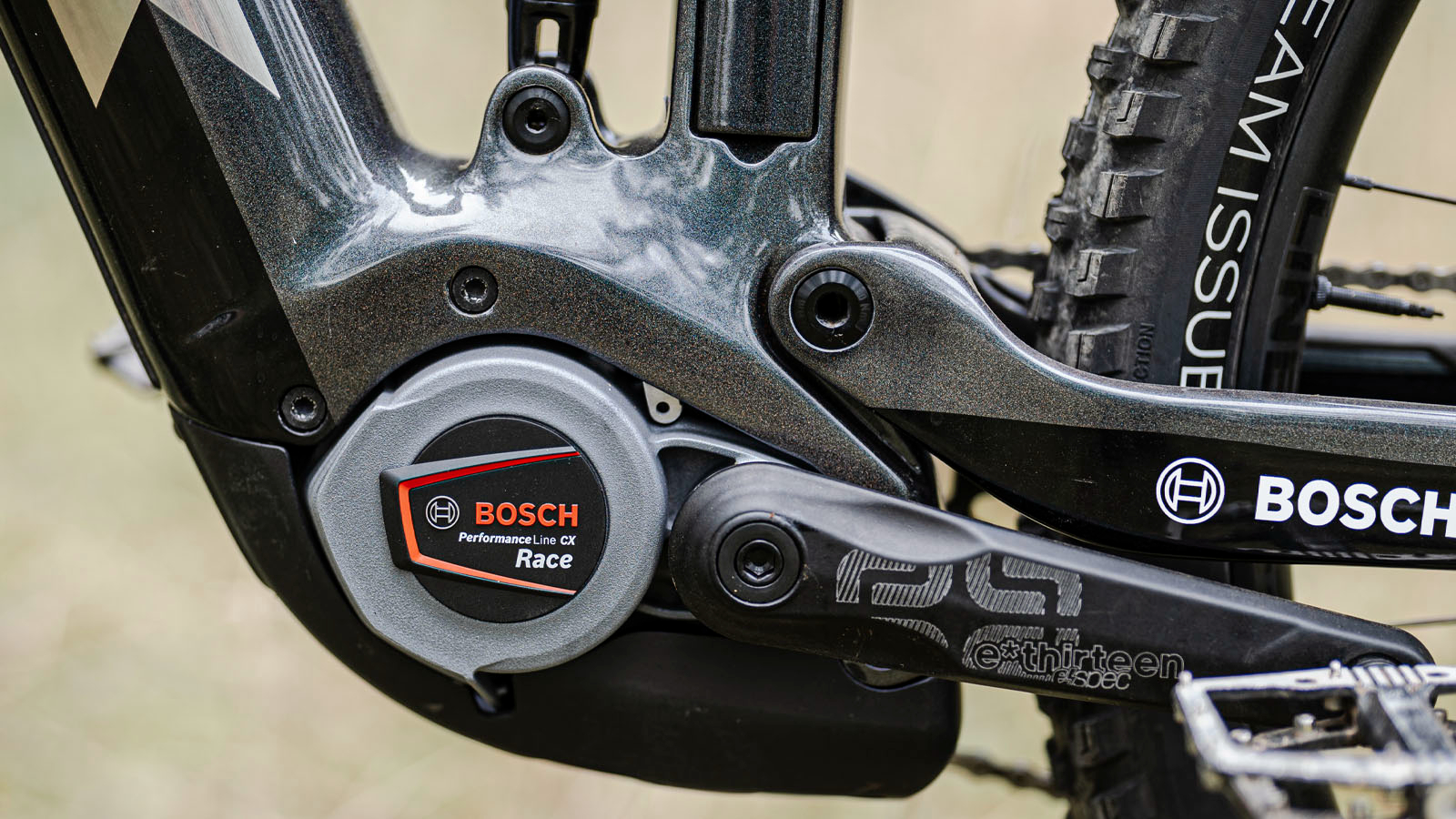
Specifications
Reasons to buy
Reasons to avoid
Bosch e-MTB motors have come a long way since they repurposed a unit designed for truck windscreen wipers, and the Performance Line CX is now the benchmark for power and display options. The lighter weight Race model is a properly rabid option for those who can handle it and there are loads of different Bosch bikes to choose from in terms of ride vibe and price.
While the Bosch power numbers aren’t the highest on paper, the CX actually has more grunt than any other mainstream motor on the trail. It pulls impressively but intuitively from low revs and keeps powering on right up to the speed limit rather than tailing off like most motors. The significant overrun when you stop pedaling in Turbo mode is an excellent secret weapon for cleaning step ups on technical climbs or other crank compromised situations once you’re used to that. It’s even more pronounced on the Race model (as is the initial slam of power), if you want maximum competitive boost with minimum subtlety. Otherwise ‘eMTB’ mode automatically controls power and economy in relation to how hard you’re riding and works great as a select and forget setting. Battery life is better than Shimano for a given capacity and there are plenty of size options too.
Bosch updated its nasty, bulky display options last year too, so now you’ve got various options from minimal Bluetooth switchgear to the multi-button remote and hyper informative, custom configurable Kiox/Nyon head units.
Noise levels seem to depend a lot on bike design and CX unit and the ‘rail’ battery mount can both rattle irritatingly as well. Bosch are a global superbrand so you’ll rarely be far from a service centre and their customer service reputation is solid if not superlative. The motor is warranted for two years but can still be repaired by Bosch or third parties outside that period.
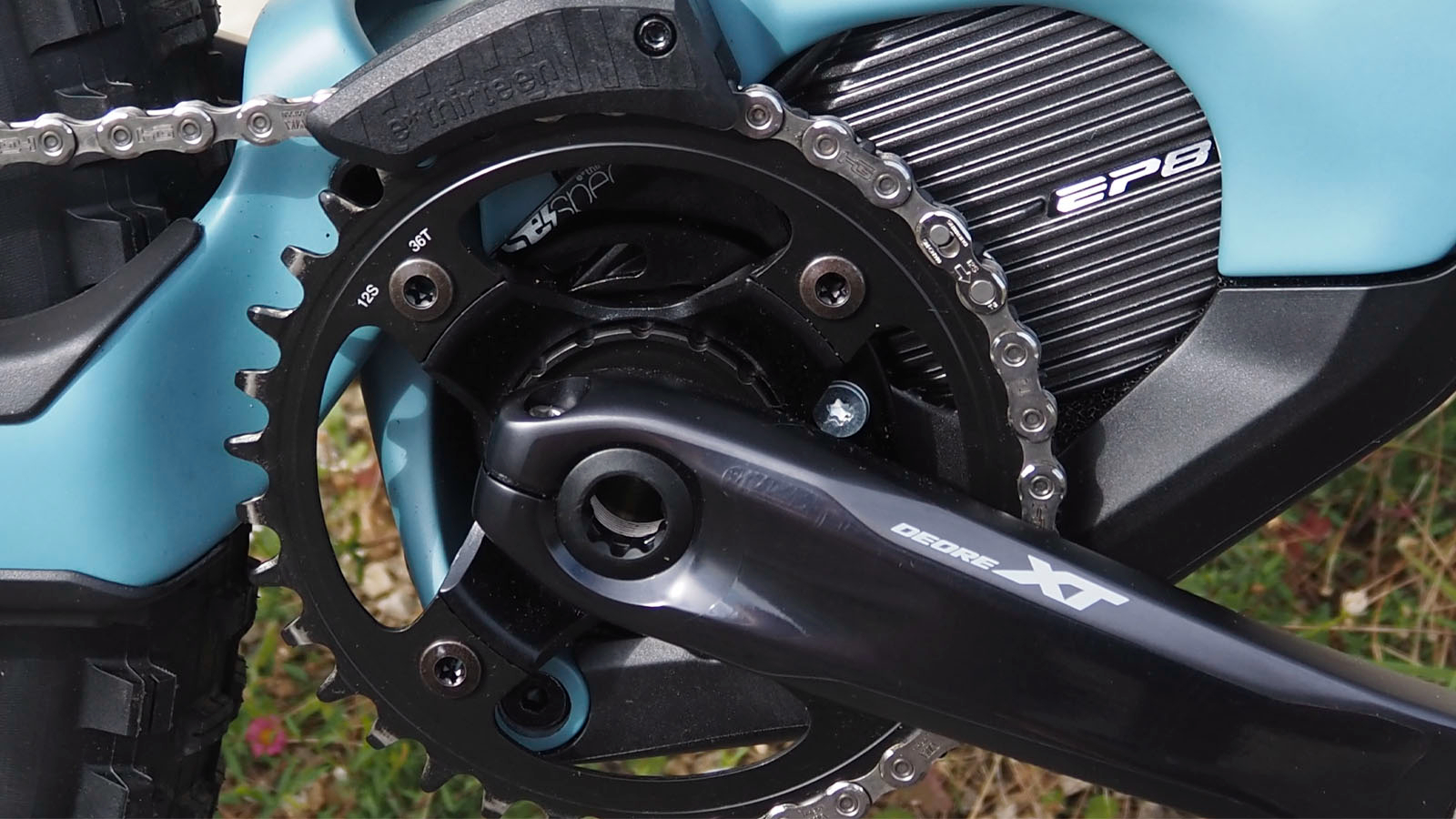
Shimano EP801
Specifications
Reasons to buy
Reasons to avoid
Shimano updated their long running EP8 motor to the EP801 version, but the changes were relatively minor unless you’re buying into their new Auto Shift gear technology – you'll need compatible wireless Shimano Di2 components to do that. That’s fine in terms of power, as it was competitive already and it’s still one of the lightest ‘full fat’ motors. That means some manufacturers like Orbea have detuned the EP801 for longer run times on their lightweight Rise e-MTBs. Overrun is short with a sudden cut-off and a savage start that can make setting off on slippery/loose surfaces spicier than you might like. Power can ebb and flow noticeably depending on your pedal speed or power input, so it doesn’t feel quite as natural at higher revs. The updated motor also supports Shimano's new Auto Shift system if you want AI to do your gear shifting for you.
The little display tucked in between bar and stem, with a switch controller near the left grip is still one of the neatest setups around. It only shows basic information in a bar style rather than percentage battery life though. From experience, Shimano deliberately set their batteries up conservatively to increase the amount of recharge cycles you’ll get, but you’ll get a shorter run time than with a non-Shimano battery of the same capacity. The improved motor still has a noticeable knock when coasting, but it’s relatively quiet overall. The E-Tube Project app is far better than it used to be, offering power and mode tuning and the option to use it as a ride data screen.
Motor internals get better protection from the elements than before, but Shimano customer support has a poor reputation in terms of response times and asking questions rather than getting you back riding ASAP. Frustratingly, Shimano only permit authorized motor repairs within the two-year warranty period, after that you'll need to find a third party to sort any problems and unofficial Shimano repairers are not particularly widespread.
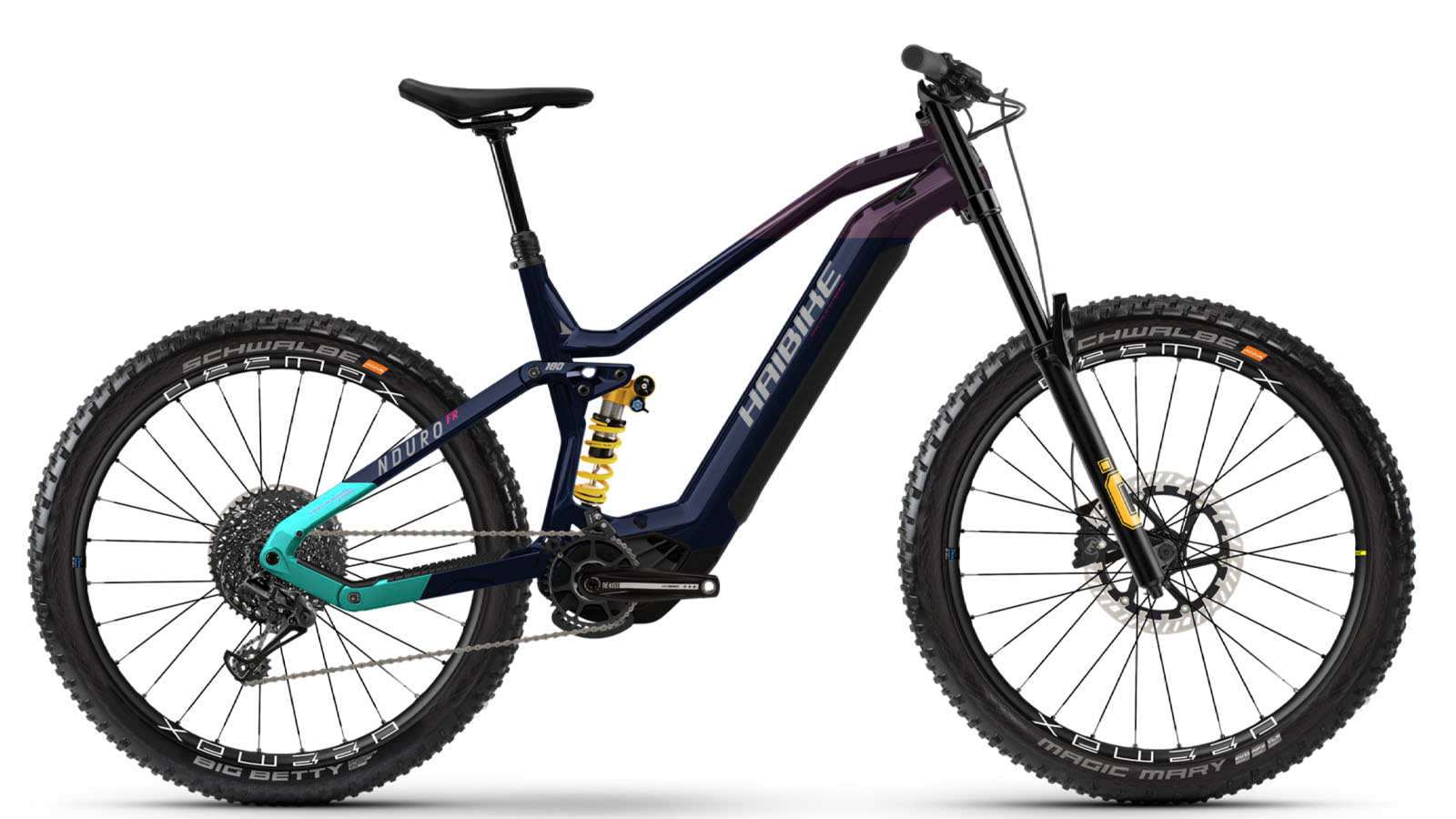
Yamaha PW-X3 / Giant Syncdrive Pro
Specifications
Reasons to buy
Reasons to avoid
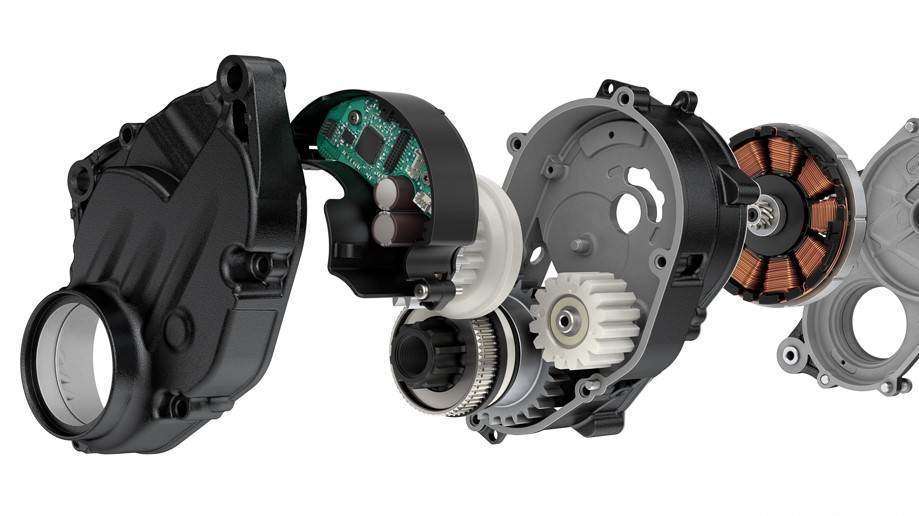
Specialized Turbo Levo 2.2
Specifications
Reasons to buy
Reasons to avoid
Specialized’s latest full power motor system is the best for slick displays and on the fly tuning and reliability has been improved too. The motor is actually a Brose S Mag, but it’s exclusive to Specialized Turbo Levo and Turbo Kenevo bikes.
The 90Nm torque headline doesn’t feel any more powerful than 85Nm motors on the trails. It’s also got a slightly narrower support bandwidth in terms of pedal speed and pressure compared to Bosch. Assistance feels very natural within that band though and a semi-belt drive means it’s the quietest full fat motor too.
Specialized have always done a great job of syncing rider and motor electronically too and the latest Mastermind TCU in the top tube can display all sorts of bike and rider info. The minimalist bar switch controls three tune-able levels and lets you modify power levels by 10 percent on the fly with MicroTune too. The Mission Control app is also one of the best in terms of intuitive control and presentation with 120 possible display configurations. Unlike the first gen app, it automatically locks other people out of your loop too so your power levels can’t be hacked by ‘helpful’ pals while you’re riding.
More robust internals mean the latest versions are proving a lot more reliable than the first generations, but Specialized have a ridiculously good reputation for sorting out customer issues immediately anyway.
The latest X3 version of Yamaha’s motors is what powers most of Giant’s e-MTBs, as well as Haibike and other brands. It’s significantly smaller than the previous X2 (which used to bulge out of the belly of most frames) and it’s 300g lighter too, so it sits between Bosch and Brose on the scales. It also has a narrower Q factor (how wide the cranks/pedals are) than most other motors, so you won’t feel like you’re riding a horse. You get a total of five modes – Eco, Tour, Active, Sport and Power – with Active and Sport both being rider responsive in terms of what boost they offer. On the trail that means a strong initial/low speed drive that needs some care to stop spinning out, but it tails off as you need top out speed. Like Shimano's EP8 motors, the power surges are quite vocal too – which makes it more obvious. There’s audible freewheeling clunk with a hard haptic knock through the pedals too.
When used on Giant’s e-MTBs (Haibike and others also use Yamaha motors), it gets a minimalist top tube display panel using two parallel LED strips and a 3-button RideControl Ergo 3 controller. While the on-bike displays are simple, the RideControl app lets you tune power levels and plan and record rides.
In terms of reliability, early battery disconnect issues appear to have largely been solved by recent firmware updates, though it can still be stubborn about turning on or off. There are also less Yamaha service centres than there are for Bosch, Shimano or Specialized.
The best lightweight e-MTB motors
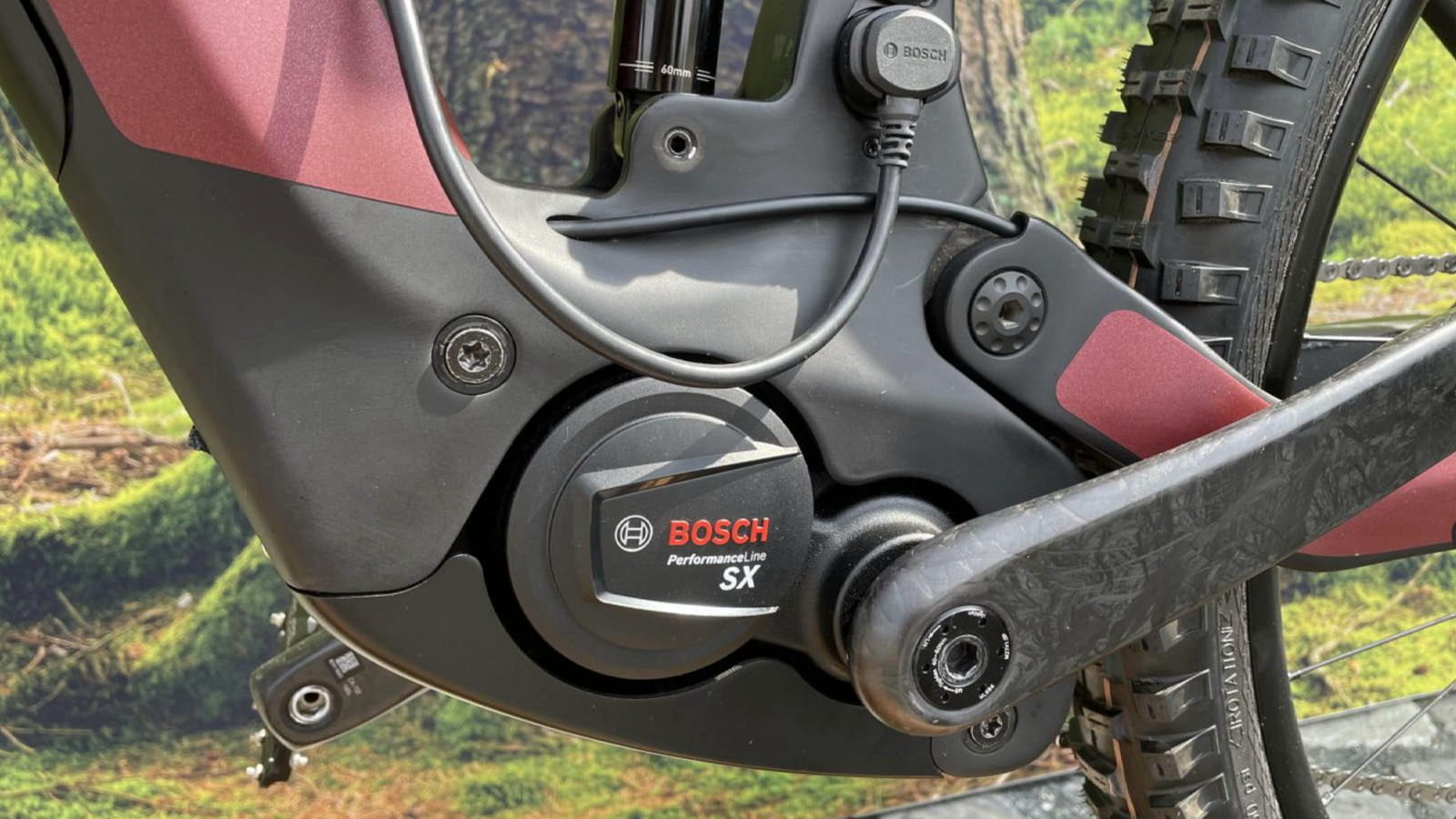
Bosch Performance Line SX
Specifications
Reasons to buy
Reasons to avoid
By downsizing the Performance Line CX motor and gearbox and using a magnesium mount with just two mounting bolts, Bosch have dropped the weight of the SX to 2kg. That makes it competitive with the lightweight options from Specialized, Fazua and TQ while retaining the motor's proven back history. I’ve only ridden the motor briefly but first impressions are very good. Top end power is way ahead of most lightweight motors for surges of speed, although torque is in line with its competitors when you’re trying to wall crawl a super steep section. You still get the same overrun boost of the Bosch CX motor for lurching up and over ledges or ratchet cranking through crux pitches without smashing your pedals though. The Q factor (width between the pedals) is 15mm less, so your feet and knees are in the same alignment as a standard bike which is great news for extended or daily pedaling sessions. Pedaling friction is down by a claimed 50 percent over the CX too, so it won’t hold you back if you’re pedaling harder than the motor is legally allowed to help you with.
The SX uses all the same controller, display and app infrastructure as its big brother, so bike brands using the system can choose options from minimalist to smart TV style spec. Hopefully, reliability will match up too but Bosch have a good rep for getting people riding again with minimum fuss and delay.
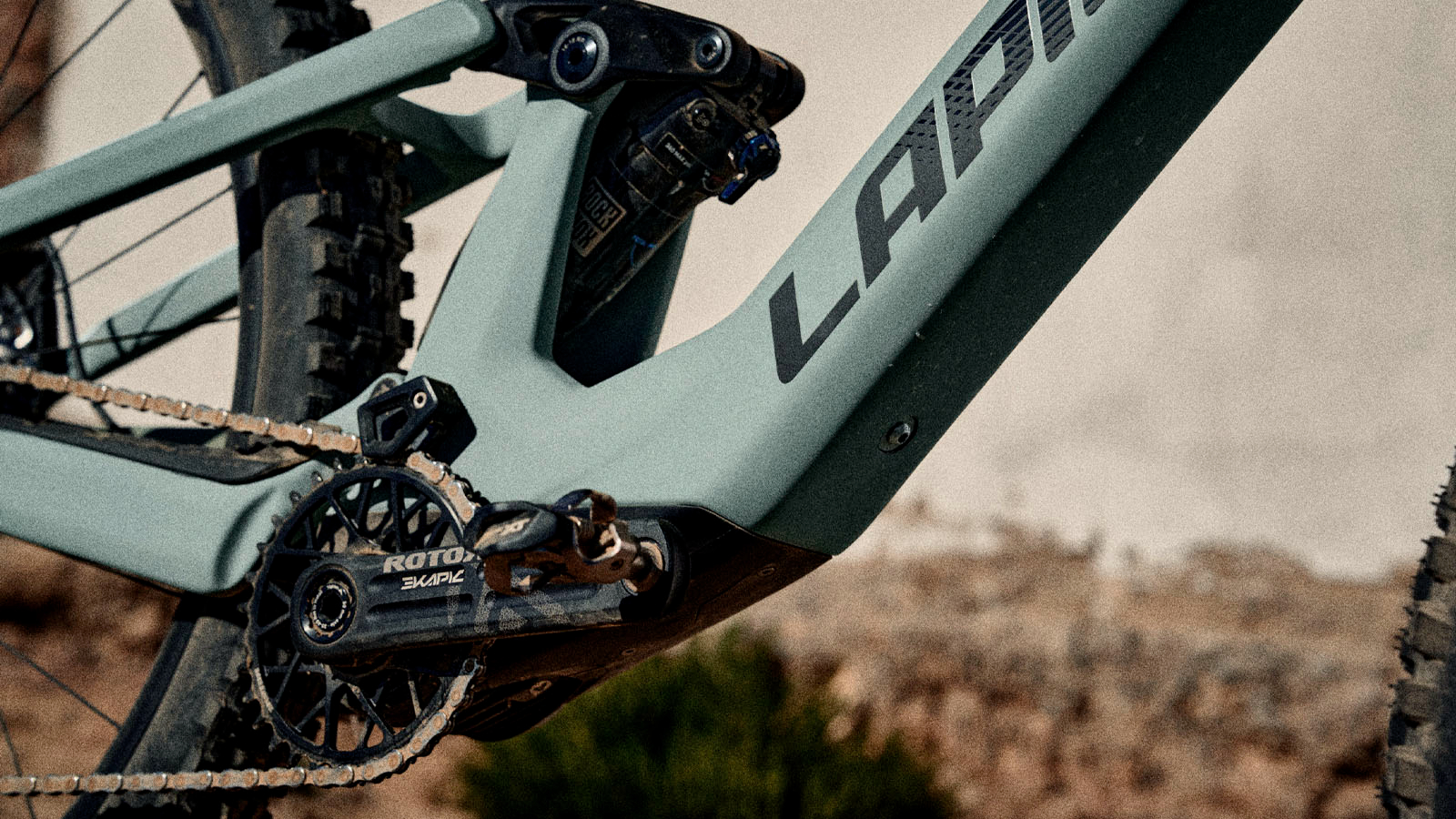
Fazua Ride 60
Specifications
Reasons to buy
Reasons to avoid
The Ride 60 builds on Fazua’s experience with their removable Evation motor and battery combination systems. The motor is now fixed into the frame but it’s still a very light and slim line unit. 60Nm of torque feels closer to full fat motors than most lightweight setups. Depending on the bike/system it’s built into you can get up to 450W of peak power in 30 seconds bursts before it has to have a rest to cool down. That’s plenty for accelerating out of corners or charging up super steep climbs sections but you need to learn to time it right to avoid the slight lag throwing you off balance. Pedaling friction is low too so there’s minimal drag when you’re pedaling past the legal top out speed.
The Fazua app offers a decent amount of functions including live data and nav if you’re using your phone on a bar mount but it’s less intuitive and more dated in feel than others. The colored LED display that indicates the three ‘Breeze, River and Rocket’ modes and the remaining run time can be hard to read at a glance, particularly in bright sunlight.
Fazua currently have a poor reputation for fast and full customer satisfaction, but new investment from Porsche looks to be helping sort that out, as they've recently announced additional servicing help for dealers.
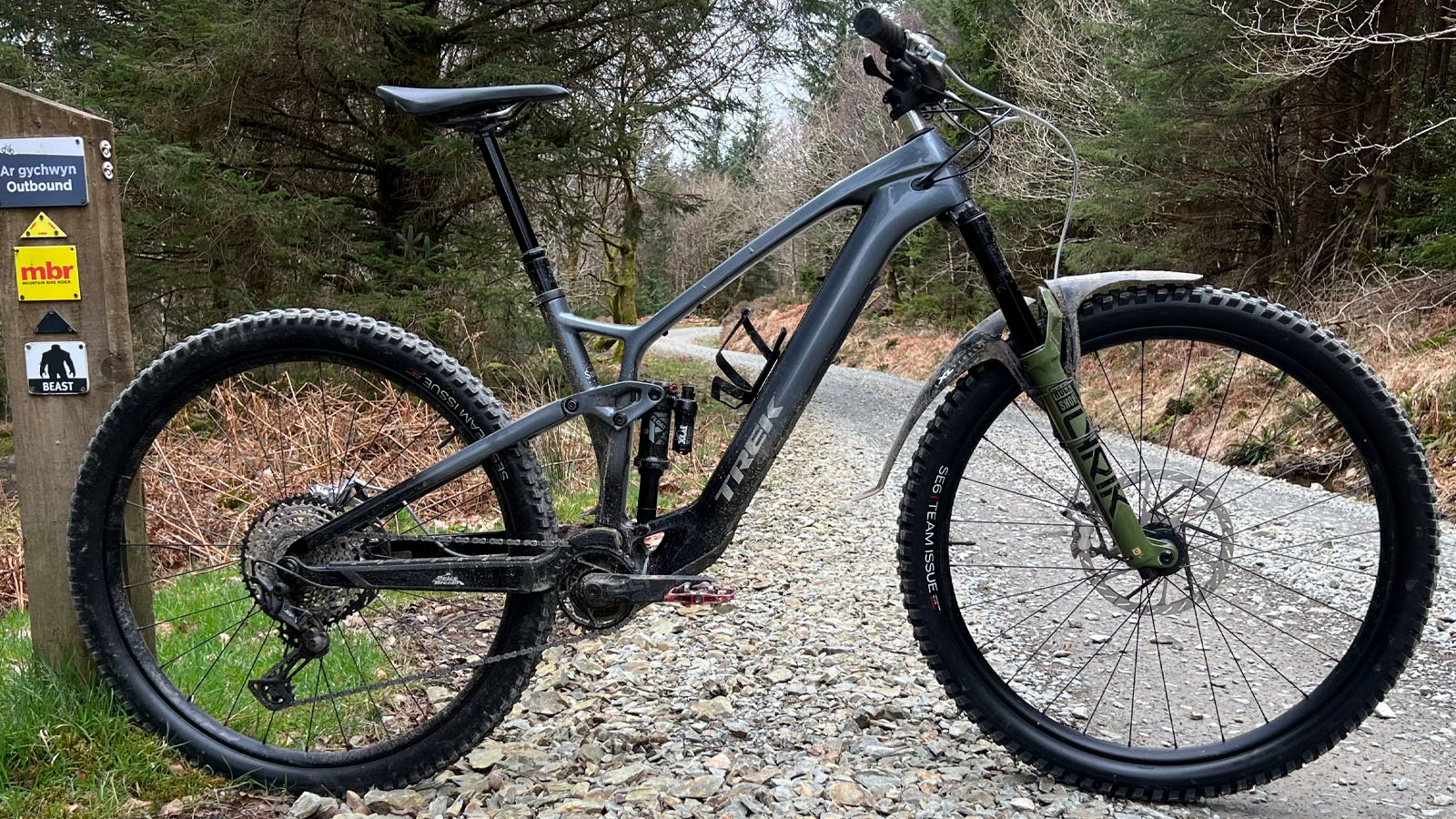
TQ HPR 50
Specifications
Reasons to buy
Reasons to avoid
TQ have been making e-MTB motors for a while but when the HPR 50 motor appeared on Trek’s lightweight EXe it was a proper game changer. Not only was it essentially silent in operation it’s also so small you wouldn’t know you were looking at a powered bike. That comes from TQ’s Harmonic Pin Ring (HPR) design that wraps the rotary phased pulse motor around the axle. And if that sounds space age you won’t be surprised that TQ also build robotics for NASA and other out of this world clients. The control unit is similarly minimalist but displays all the data you need very cleanly in the top tube. There are various switchgear options for the 3 power modes too, including a really fun ‘boost twister’ used for FFWD acceleration surges on the superlight Rotwild RX275. While it’s nominally rated at 50Nm with 300W of power different bike brands can specify individual tunes to increase peak power or battery life. That might be why it didn’t feel as powerful as claimed when compared to the Levo SL II motor in head to head testing. The power delivery is very natural though and together with it’s stealth looks and silent running the overall ride vibe is that you actually did that winter training you promised you would rather than obviously being on a ‘cheater bike’. It’s worth noting TQ also produce some seriously powerful ‘full fat’ e-MTB motors like the HPR 120S for brands like Haibike.
Reliability seems to be good so far and talking to brand managers they seem to be a really pro active company to work with which bodes well for the future.
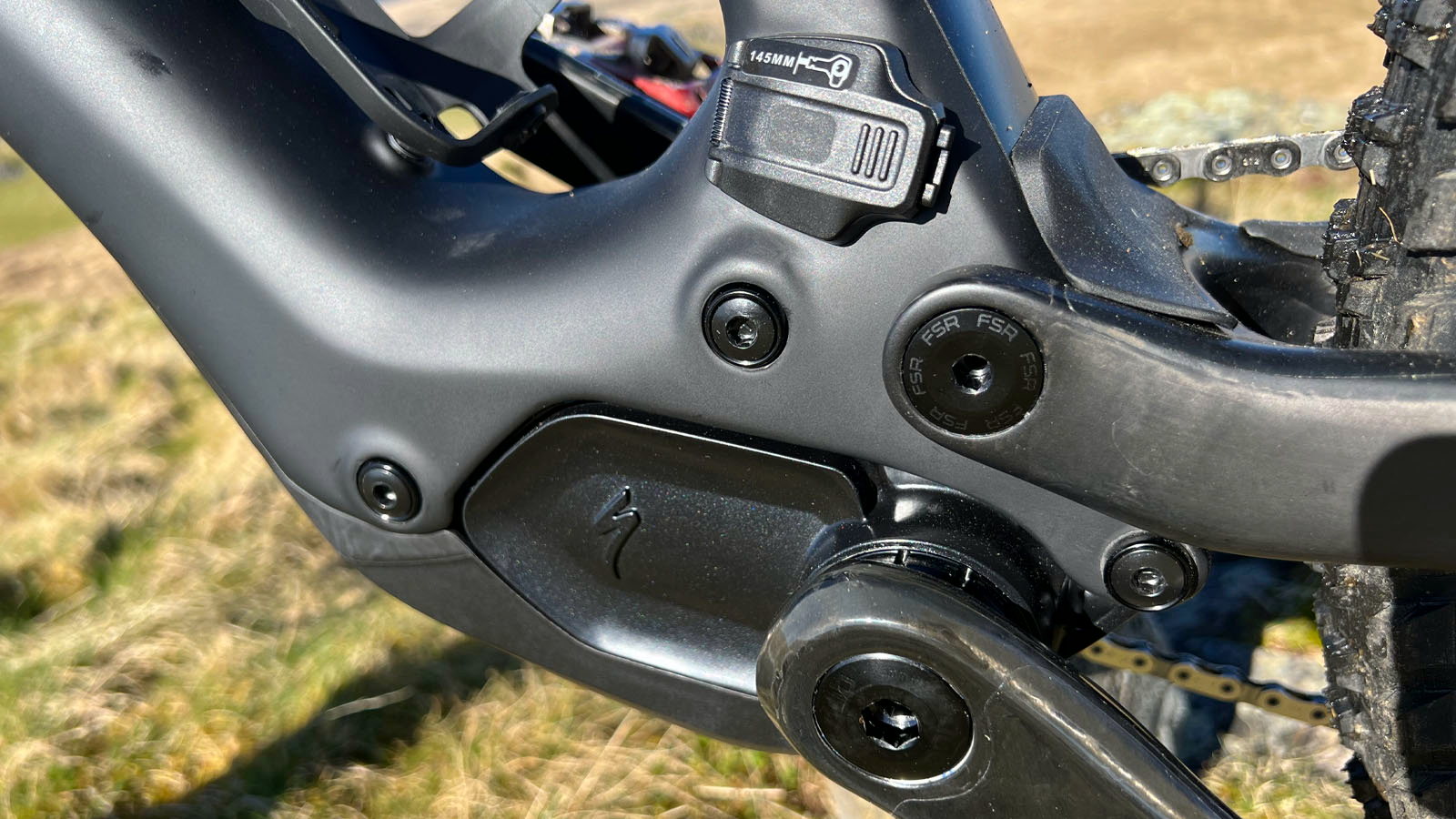
Specifications
Reasons to buy
Reasons to avoid
The SL 1.2 motor is unique to the Specialized Levo SL II and helps make it one of our favorite MTBs – not just one of our favorite e-MTBs. It's an evolution over the 1.1, but it delivers a 43 percent increase in maximum power with reduced weight and much lower noise levels. That’s been achieved with a fancy two-piece honeycomb motor casing and a greater gain gearbox increasing maximum power up to 50Nm and 320W. On paper that matches lightweight motors from TQ and Fazua but it actually feels a lot stronger on the trail. While it’s optimized from 70 to 100 rpm it still pulls smoothly outside that range and subtle overrun means no weirdness to get used to in terms of juggling traction. We also got better range out of the Levo SL than the Fuel EXe over the same terrain as we could use ‘lower’ power modes more on the Specialized than the TQ motor Trek. While it’s not as silent as the TQ it’s still very quiet, with the whirring masked by tire/trail/wind noise on most surfaces. There’s no obvious freewheeling knock either.
The MasterMind TCU in the top tube gives up to 120 possible display functions and MicroTune power changing on the fly as well as a simple toggle switch on the left hand bar for motor mode changes. You can micro manage power levels while riding by 10% too. The fact it’s generally out of your eyeline and the motor is audibly and assistance unobtrusive makes it very easy to forget you’re even riding an E-bike too. Full IP67 waterproofing means you don’t have to worry about weather either. While it’s early days for this versions the SL motors have always been more reliable than the full power Levo motors and Specialized are legendary for ‘above and beyond’ customer support.
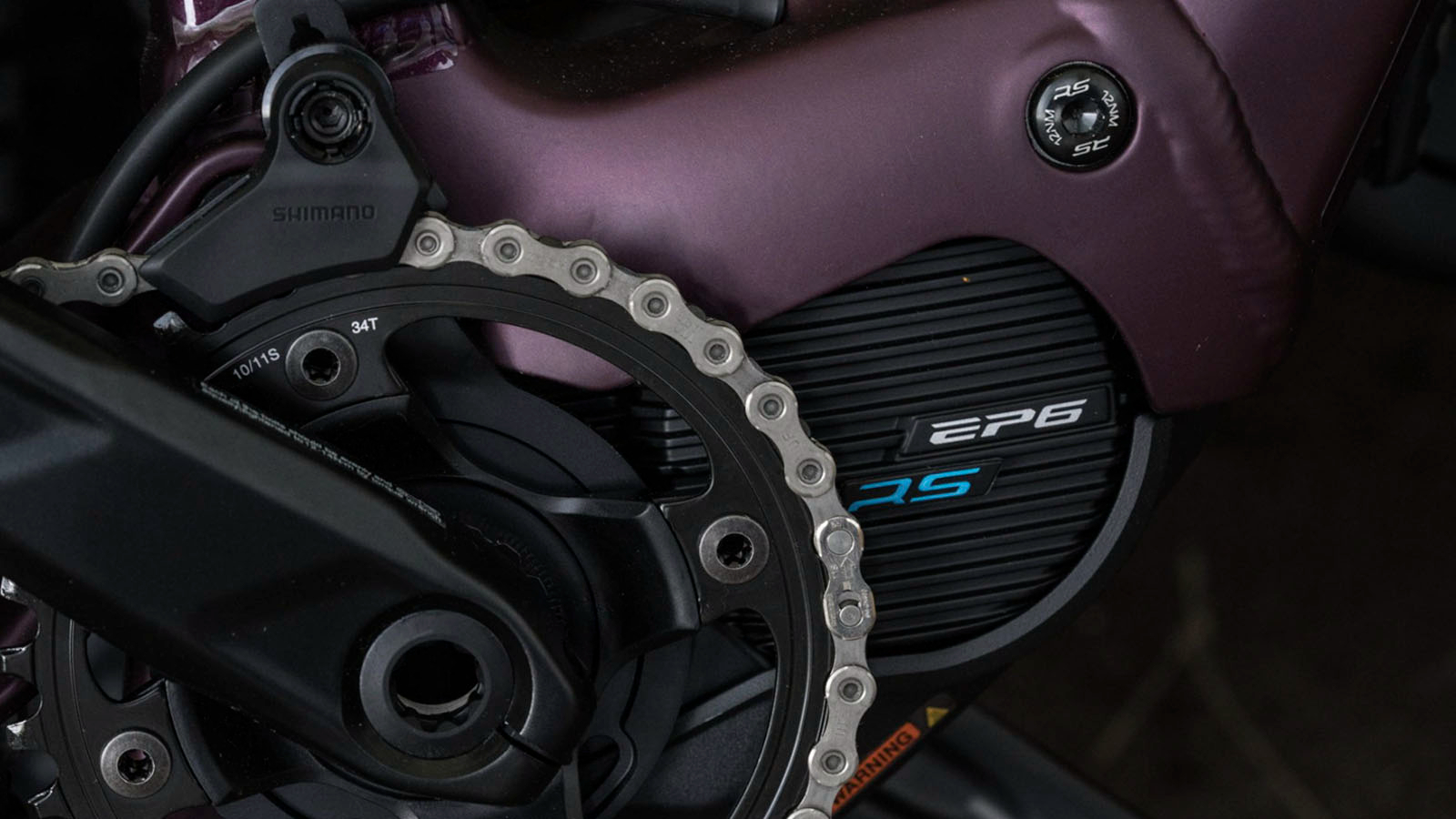
Shimano EP6
Specifications
Reasons to buy
Reasons to avoid
EP6 is Shimano's more cost effective e-MTB motor which is why you get a black and white display and a simpler casing which adds 200g compared to the EP801. Apart from that the guts – and therefore power, torque and efficiency are the same – and if anything the heavier casing actually makes the EP6 slightly quieter. It’s still noisy compared to the Brose, Fazua and definitely the TQ too. And yes, it still clanks when you’re coasting, which Shimano don’t seem too bothered about, but often drives us nuts when riding on smoother terrain. The Shimano batteries are also configured so that they priorities long term life in terms of how many charge cycles you can get before capacity starts to decrease obviously, rather than how much run time you’ll get on each ride. Bikes with an EP6 but a non-Shimano battery don’t have that skew though, so you’ll go further for a given cell size.
The ‘bar pit’ display is neat and unobtrusive and the flick switch controller is equally stealthy on the bars. What it can display is very limited though and the five-step bar graph charge indicator can cause range anxiety when it drops suddenly from 2 to 1. The latest E-Tube Project app turns your phone into a mode tuner and ride data display though if you get a suitable mount. It also supports Shimano’s new Auto Shift gear system if you want AI to do your thinking for you.
Shimano customer service has a reputation for leaving people hanging rather than rushing to get them back on the trail however.
The other options
While we’ve covered the most common e-MTB motors here, they’re not the only ones. Panasonic have a range of power units, Bafang make motors for brands like Forestal, and Rocky Mountain have a unique motor system that works via an idler wheel. We’ve not tested them yet, but be sure to look for reviews of e-MTBs from the relevant brands here on Bike Perfect and we’ll update this guide at the same time.
Which e-MTB motor is right for you?
As we stated at the start, there’s much more to choosing an e-MTB than just the motor. If other things are looking equal though it’s worth knowing what to look for depending on your priorities. Here are our expert picks for the four ‘best’ categories we’re asked about most.
1. Best overall performance
Bosch have always delivered the benchmark performance but their recent improvements to controllers, displays and the Smart System app really put them in pole position. There are loads of Performance Line CX bikes to choose from too and the addition of Race and SX variants open up specialist potential.
2. Best smart screens and customer support
Mud, crashes and relentless rattling are a brutal environment for anything electrical so e-MTB problems are inevitable at some point. That makes customer service one of the most important parts of choosing what system you’ll get maximum use out of long term. While Bosch and TQ have a decent reputation, Specialized are legendary for their ‘no questions asked, new motor waiting at the shop when you get there’ support and their motors are getting a lot more reliable too.
3. Best silent and stealthy
Want to still hear the birdsong and wind in the trees while still getting enough assistance to top heavy breathing? Nobody can touch TQ for effectively silent riding and minimal motor size and sleek displays potentially create an ultimate stealth e-MTB set up.
4. Best race motor
E-MTB racing is still in it’s infancy from a ‘normal rider’ participation point of view, but it’s already an Olympic sport and likely to grow massively. Power, reliability and power delivery style made Bosch Performance Line CX the racers choice anyway, but the new Race motor gives even more race pace for those who can control its ferocious feel.

Guy Kesteven has been working on Bike Perfect since its launch in 2019. He started writing and testing for bike mags in 1996. Since then he’s written several million words about several thousand test bikes and a ridiculous amount of riding gear. He’s also penned a handful of bike-related books and he reviews MTBs over on YouTube.
Current rides: Cervelo ZFS-5, Specialized Chisel, custom Nicolai enduro tandem, Landescape/Swallow custom gravel tandem
Height: 180cm
Weight: 69kg
